这个学期,融合部的语文课堂,有点不一样。我们将哈佛大学“可视化教学理念”中的“角色扮演法”和美国德州大学的“Jigsaw分组策略”融入了课堂,以学生的小组合作、互动为课堂的中心,为语文教学带来了一种全新的视角。This semester, the Mandarin class in the Fusion Department is quite different. We intergrated the “Role-playing Method” from “Visualable-Thinking Teaching Strategies” from Harvard University. WE also trialled a “Jigsaw Reading strategy” into the classes which took the students’ group cooperation and interaction as the focus of the class. This has brought a new perspective to our Chinese teachers.
什么是“角色扮演法”?What is “Role-Playing”?
思考一个人或物与你正从事的研究之间存在的联系,置身于事件或环境中进行考察,思考例如以下问题:Think about the connection between a person or thing and the research you are doing. Examine it in the context of an event, for example:
1.这个人或物能够观察或注意到什么?What can this person or thing observe or think?
2.这个人或物能够理解或相信什么?How much does the person or thing understand or believe?
3.这个人或物真正关心什么?What does this person or thing care about?
4.这个人或物好奇或怀疑什么?What is the person or thing curious about or doubt?
用“角色扮演法”能够帮助学生加深对人物和事件的分析理解,从而提高学生的移情反应能力
。”Role-playing” can help students to deepen the analysis and understanding of characters and events, and can improve the students’ ability to respond empathetically.
什么是“Jigsaw分组策略”?What is “Jigsaw Reading”?
Jigsaw分组策略,是由美国德州大学Aronson教授于1971年所提出的。顾名思义,Jigsaw分组策略引用借鉴了“拼图”的概念,有一个从“原组”到“新组”再到“原组”的教学进程。这个分组策略不仅能有效提升学生的学习成就、提高学生的学习动机,更有助于培养学生尊重他人、清楚表达、理性沟通的社会技巧与观念,非常适合以文本为主,且可以被等分成若干份,可以给学生进行学习的教材。
The Jigsaw grouping strategy was proposed by Professor Aronson from the university of Texas in 1971. As the name suggests, the Jigsaw grouping/ reading strategy refers to the concept of a “Jigsaw”. Basically parts of the texts are read by different groupos and then the students regroup so all of the parts are represented. The students then share their understanding of the pieces of text wwith others. Each group thenn has an idea of the bigger picture or the whole text. This strategy enables students to tackle large texts and gain and understanding of them. It improved the students’ learning achievements and helped them to overcome their learning difficulties. It also helped to cultive the students’ social skills andtheir respect for others. They had to read carefully, use a clear experession and rationally communicate their understanding.
如何在课堂中,将这些策略很好地运用其中,融合部三年级的徐瑜老师就向我们做了一个很好的展示。How to use these strategies well in class? Teacher Xuyu, from Year 3 of the Section presented to us a good demonstration.
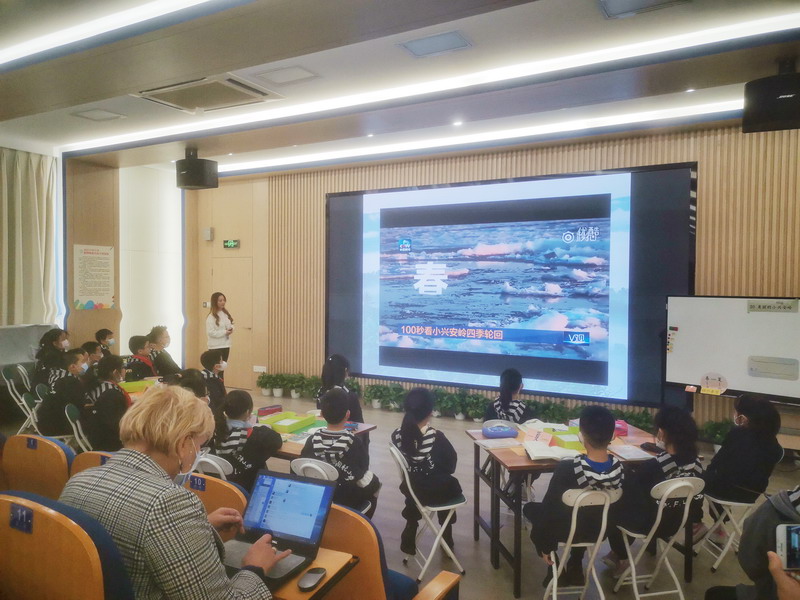
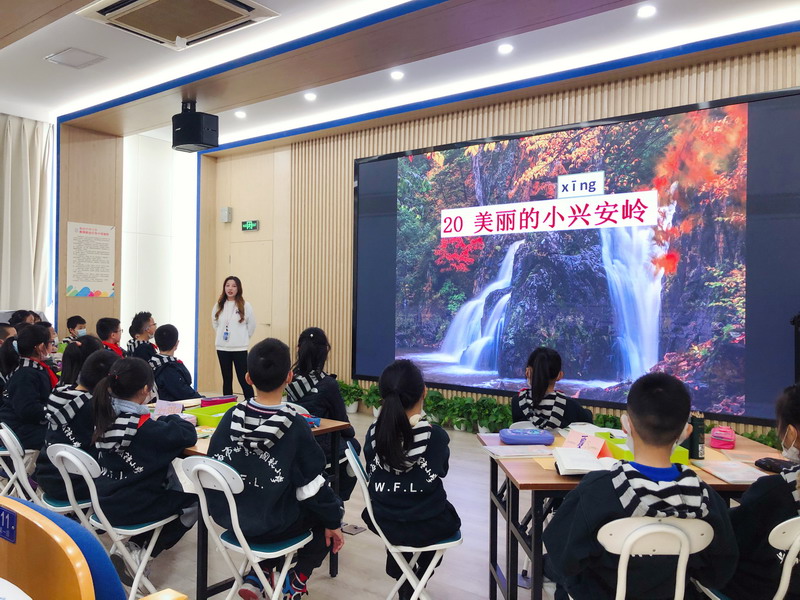
本次课堂围绕三年级语文课本《美丽的小兴安岭》一课展开。生动简洁的视频引入后,孩子们就根据抽取的活动单,进入Yucie老师根据Jigsaw分组策略设计的季节组“春、夏、秋、冬”和“小小游客组”共五组,思考学习单的任务。This lesson is talking about "The beautiful Little Xing An Mountain" from the Year 3 Chinese textbook. At the beginning of the lesson, a vivid video elicits the lesson, the children go to each group according to the task sheet which is designed by teacher Yucie. It was based on the “Jigsaw reading strategy”. The five groups are “Spring, Summer, Autumn, Winter and little tourists”.
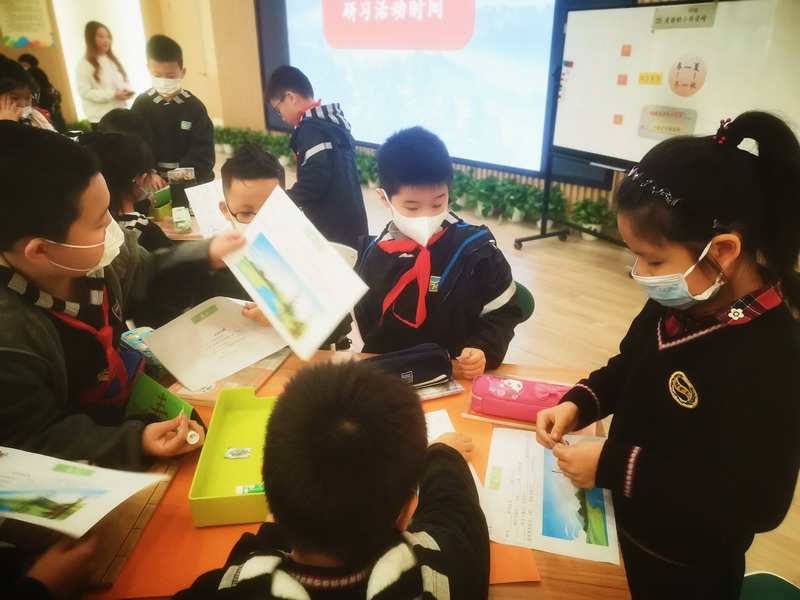
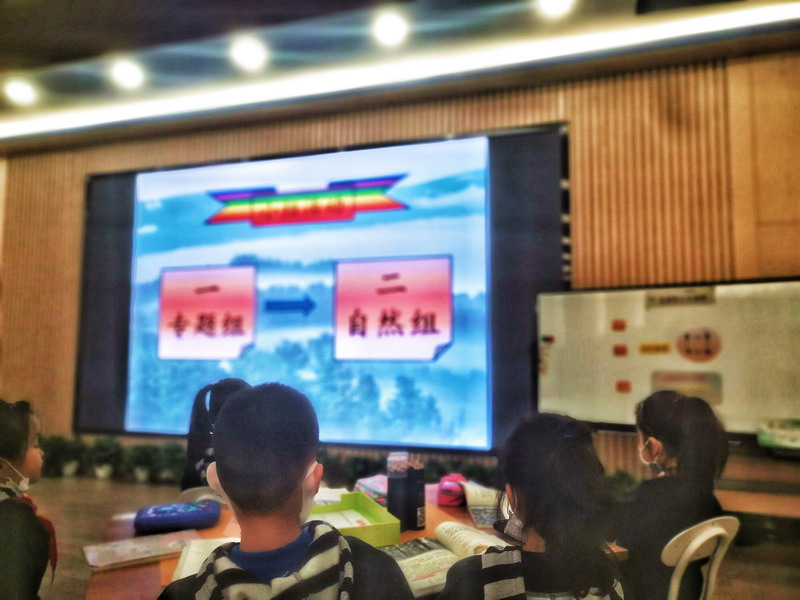

这五个小组的学习单各不相同,它们会以生动有趣的形式囊括这篇课文所有的知识点。The task sheets of the five groups are different but they cover all the points of the text in a lively and interesting form.
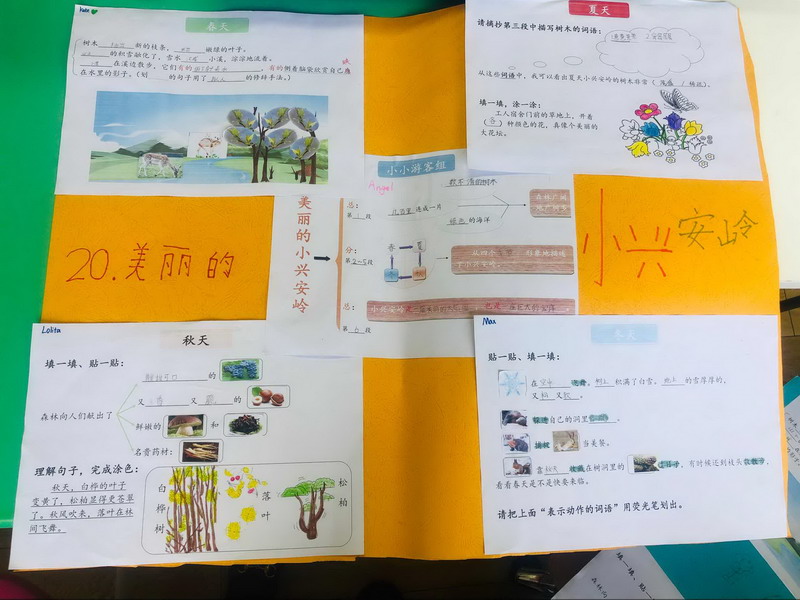
例如,比如说理解文章相关句子之后,通过将图片贴完整或涂颜色的方式,呈现对这句句子的理解。还有通过贴图理解句子的修辞手法,“有的。。。有的。。。”句式的运用One example was after the students understood the relevant sentences in the article,They showed their understanding of the sentence by pasting the whole picture or coloring it. They used stickers to understand sentences, “ Some are... some are...” and were able to use the sentence patterns.
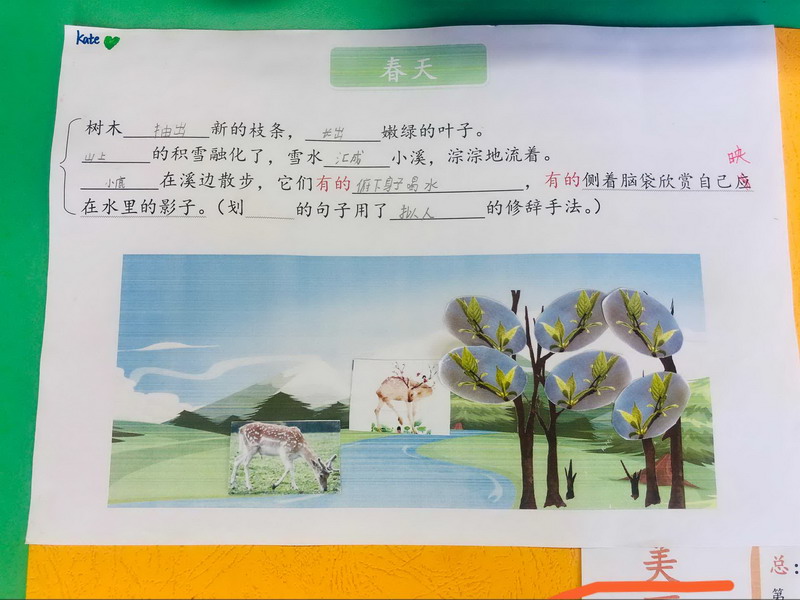
再例如,孩子们会摘抄课文当中描写树林的词语,然后去判断这个树林的特征是茂密还是稀疏。Another example is the children would copy the words describing the trees from the text and then judge whether the trees were thick or sparse.
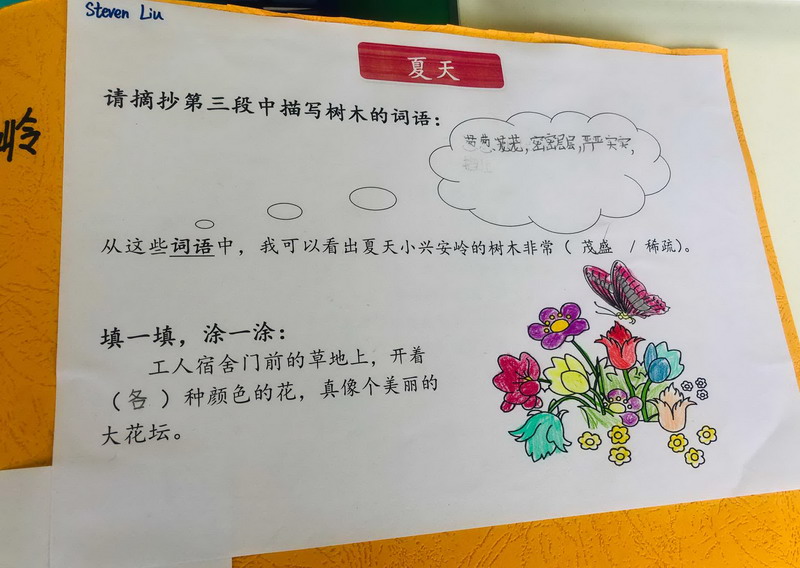
不仅如此,活动中也涵盖了形容词与名词的搭配使用、动词的识别,去帮助孩子们理解词性。In addition, the activity also covered the combination of adjectives and nouns, verb recognition, in order to help children understand the different parts of speech.
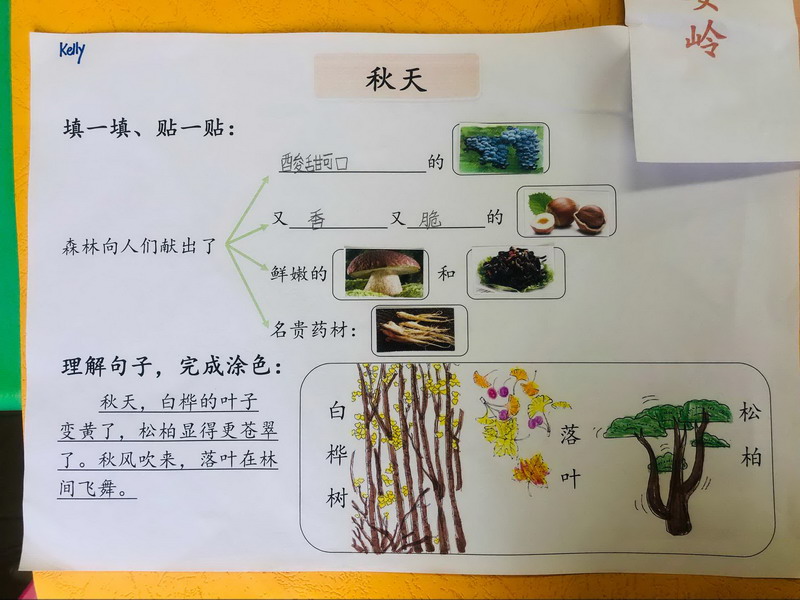
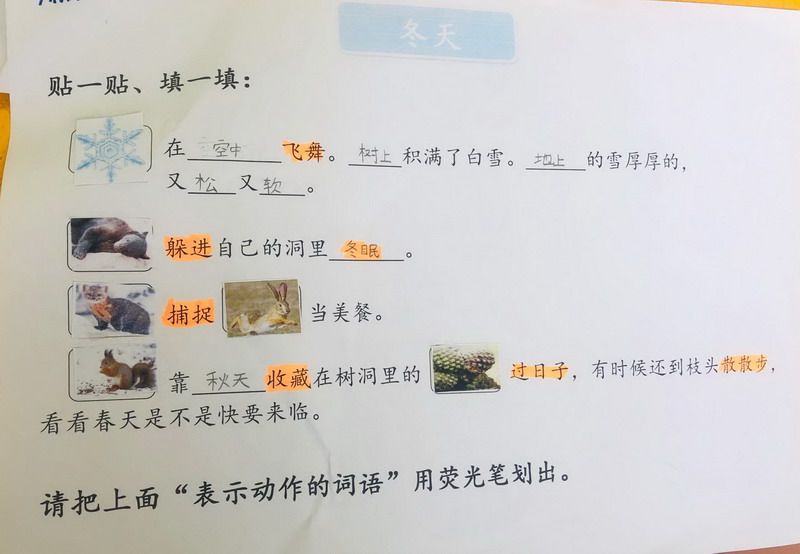
“小小游客组”的孩子们还会负责总结文章的结构,梳理思维导图,从而帮助组员理清文章的整个脉络和结构。The children in the ”Little Tourists Group” were also responsible for summarizing the sturcture of the article and sorting out the mind map, so as to help the group members understand the whole context and stuctures of the article.
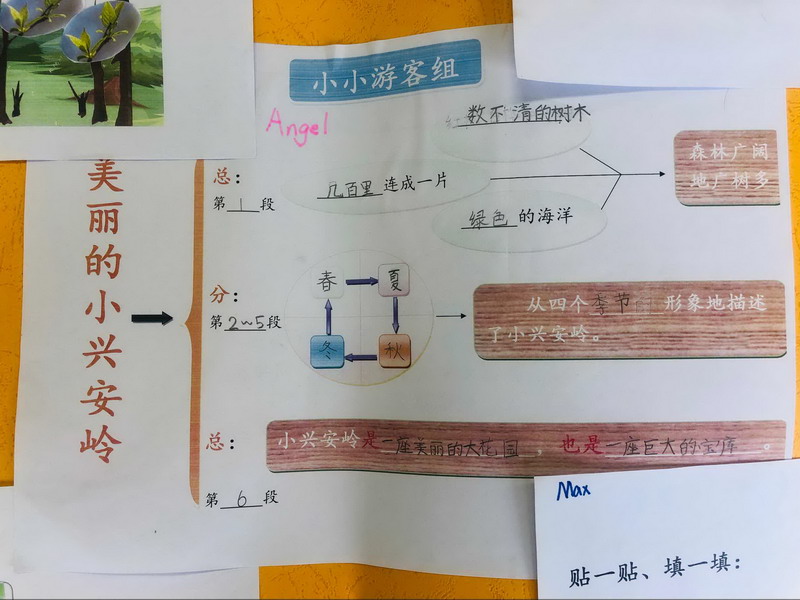
五个“春、夏、秋、冬和小小游客组”的孩子在自己的专题组研究完成后,会回到初始的“自然组”,结合Yucie老师根据“角色扮演”教学策略设计的情境,分享自己在专家组的学习成果。The five “Spring, Summer, Autumn, Winter, little tourists group” returned to the original grouop after their research is completed, and share their learning results. They did this by role playing. 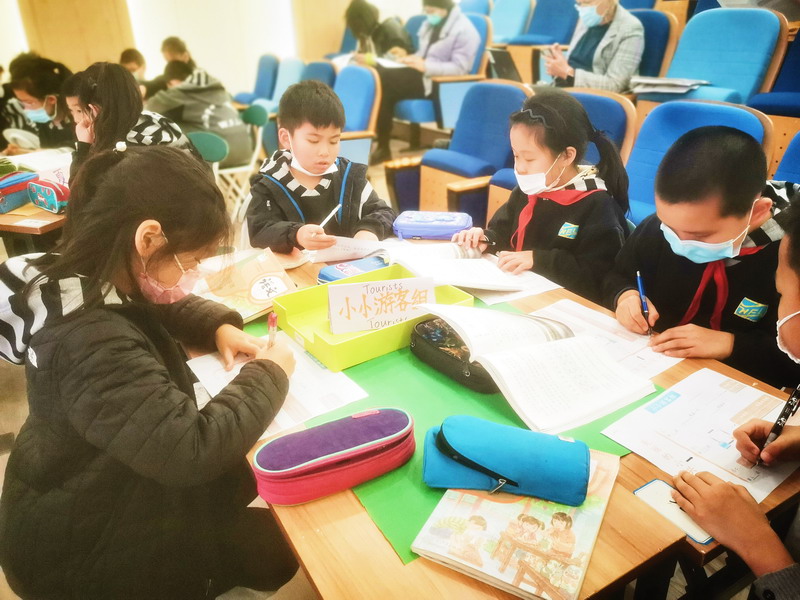
这样每个自然组就有“游客、春、夏、秋、冬”五个人,互相分享成果。In doing so, there are five people in each group: “tourists, spring, summer, autumn, winterr”.

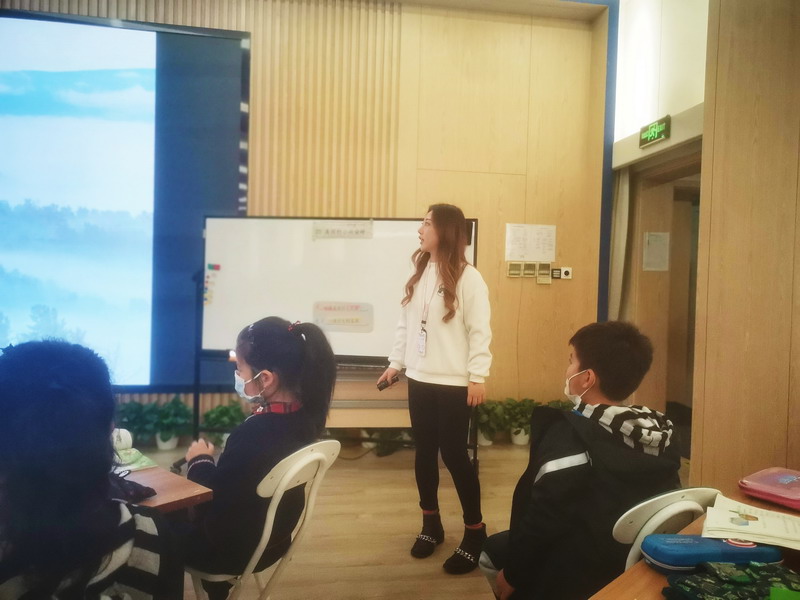
最后担任“游客”的小朋友,要听四个化身为“小兴安岭”旅游的季节代言人的孩子展示介绍,决定哪个季节的小兴安岭最吸引自己,决定去那里旅游,这也是学生间的互评与沉浸式的情境体验,能最大程度加深孩子们对课文的理解。Finally, the person who is the tourist, needs to listen to the four descriptions of the seasons, as the representitive of “Little Xing An Mountain” . The students after the introduction decide which season is the most attractive one for travelling. This also was an opportunity for cooperation and lively discussions. between the students. Using this and immersing the students in the text deepened their understanding.
”
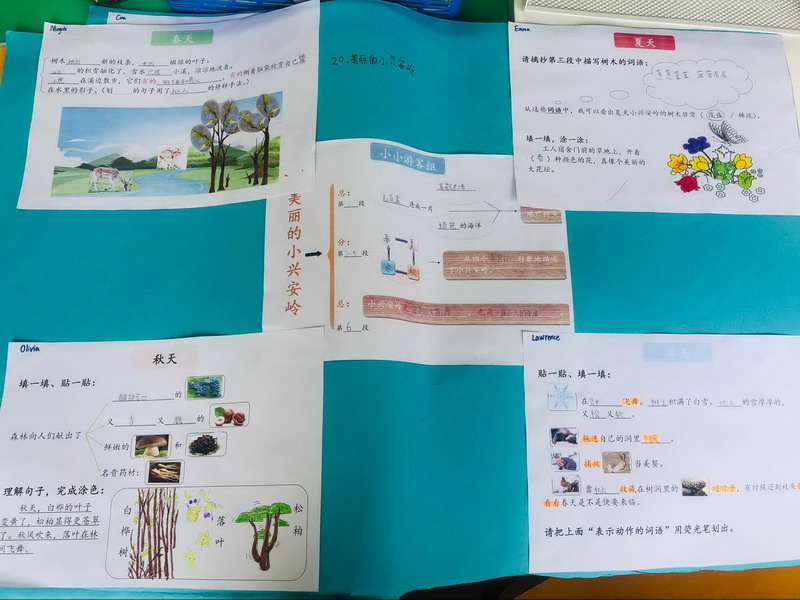
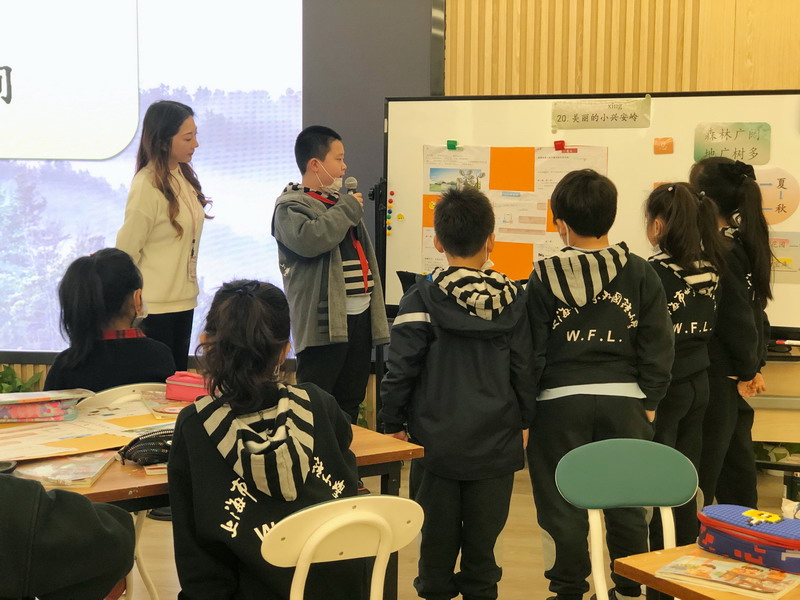
哈佛大学“可视化教学理念”中的“角色扮演法”和美国德州大学的“Jigsaw分组策略”与课堂融会贯通,以学生为主导,小组合作、互动式的教学方式让学生在知识获取的方式上眼前一亮,也使得他们在学习过程中理解有明显的加深。通过这些创造性的教学策略让我们能在课堂上挖掘孩子最大的潜能,让每一个孩子都能参与到课堂中。
“Role-playing” from Visual Teaching Strategies from Harvard University, and the “Jigsaw group/ reading strategy” from the University of Texas in the United States are integrated into the knowledge acquision classroom. It is basically student-led, cooperative teamwork and interactive. These teaching methods make students see an interesting way to acquire knowledge, and develop a deep understanding of the learning process. Through these creative teaching strategies we are able to tap into the maximum potential of children in the classroom, so that every child can participate.
撰文 图片 徐瑜
Article Pictures Yucie


